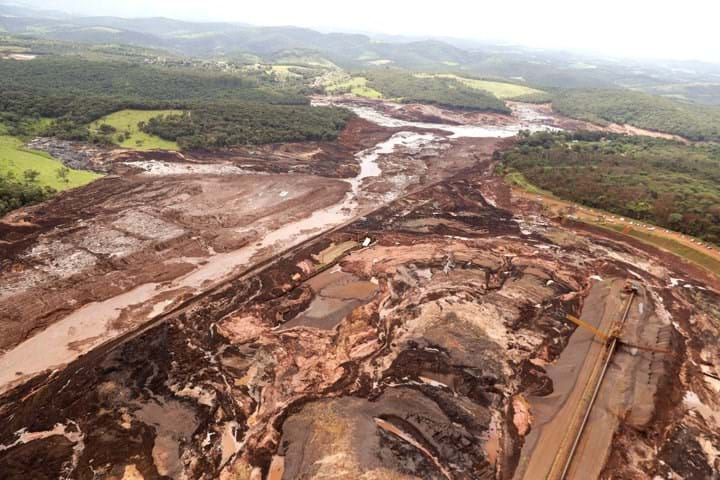Operations halted at Vale
A court decision has ordered Vale to stop activities at 13 of its mine tailings containment structures in Brazil. The decision will impact 30m t/y of the company’s iron ore production.
In January, a Vale mine tailings dam fatally collapsed in Brumadinho, Minas Gerais, Brazil. Mine tailings dams are used to store mine tailings, the waste product of ore extraction and processing. So far 214 people have been confirmed dead and 93 people are missing.
The recent decision will only impact production at Vale’s Brucutu mine, as one of the dams receives tailings from it. The Brucutu mine produces 30m t/y of iron ore, about 8% of the company’s annual output according to Reuters. Vale was about to resume operations at the dam after receiving state approval for one of the mine’s dams, and on 21 March Vale announced it planned to do so within 72 hours. The court decision will now delay the resumption of operations.
According to Vale the decision was prompted by preliminary information on the structures which was given to prosecutors.
The company said that it will “continue to take necessary measures to ensure safety of its dams and will take appropriate legal measures concerning civil actions”.
Court decisions
Another court made the decision to freeze Vale funds. The court froze R$2.95bn (US$ 760.9m) to ensure reimbursement of losses experienced due to evacuation that has or may occur in relation to Vale’s Sul Superior dam of the Gongo Soco mine, in Barão de Cocais, Minas Gerais, Brazil.
Sul Superior was recently placed on critical alert, which prompted evacuation drills of the dam’s Secondary Self-Rescue Zone (ZSS). The ZSS is an area outside of the Self-Rescue Zone (ZAS) where flooding could occur in the event of a collapse. The ZAS is the area 10 km downstream of the dam, or “the equivalent to the arrival of the flood wave in 30 minutes”. Vale is responsible for alerting the population of the ZAS, in the event of an emergency.
Sul Superior’s ZAS had already been evacuated on 8 February as a preventive measure.
At another court a judge decided that Vale is to present a report by an independent technical auditing firm on the stability of Sul Superior. The company is also to create an action plan and submit it for approval by Brazil’s National Mining Agency (ANM) and Minas Gerais’ Secretary of State for Environment and Sustainable Development (SEMAD). Vale is also to adopt other measures aimed at ensuring the safety and stability of Sul Superior and halt any activities that may increase the risk of the dam.
The judge refused to freeze R$120m that was to cover the costs of technical audits of structures included in a public civil action.
In regard to the court decisions Vale said it “will take the appropriate measures in due course”.
An update on Dam 1

Dam 1 of the Córrego do Feijão mine collapsed on 25 January. The collapse released a torrent of muddy sludge which buried the surrounding area, affecting employees, contractors, and members of a nearby community.
Vale says that it continues to focus on recovery measures and aiding people affected by the incident. “The measures include accommodation, psychological and medical assistance, infrastructure recovery, financial aid and contributions to institutions that are helping the company in its humanitarian aid efforts”. Contributions include R$20m given to the Minas Gerais Fire Service and R$6.5m worth of equipment given to the Forensic Medical Facility (IML) of Belo Horizonte, Brazil.
Vale has begun paying donations to people affected by the collapse. Payments have been made to the families of victims, residents of the ZAS of Dam 1, and those that carried out productive or commercial activity in the ZAS.
The company is also paying compensation to residents of Brumadinho or those who resided within a defined distance of the Paraopeba riverbed on the day of the collapse. Payments have so far been made to the members of two communities which were most affected by the collapse.
Recent Editions
Catch up on the latest news, views and jobs from The Chemical Engineer. Below are the four latest issues. View a wider selection of the archive from within the Magazine section of this site.




